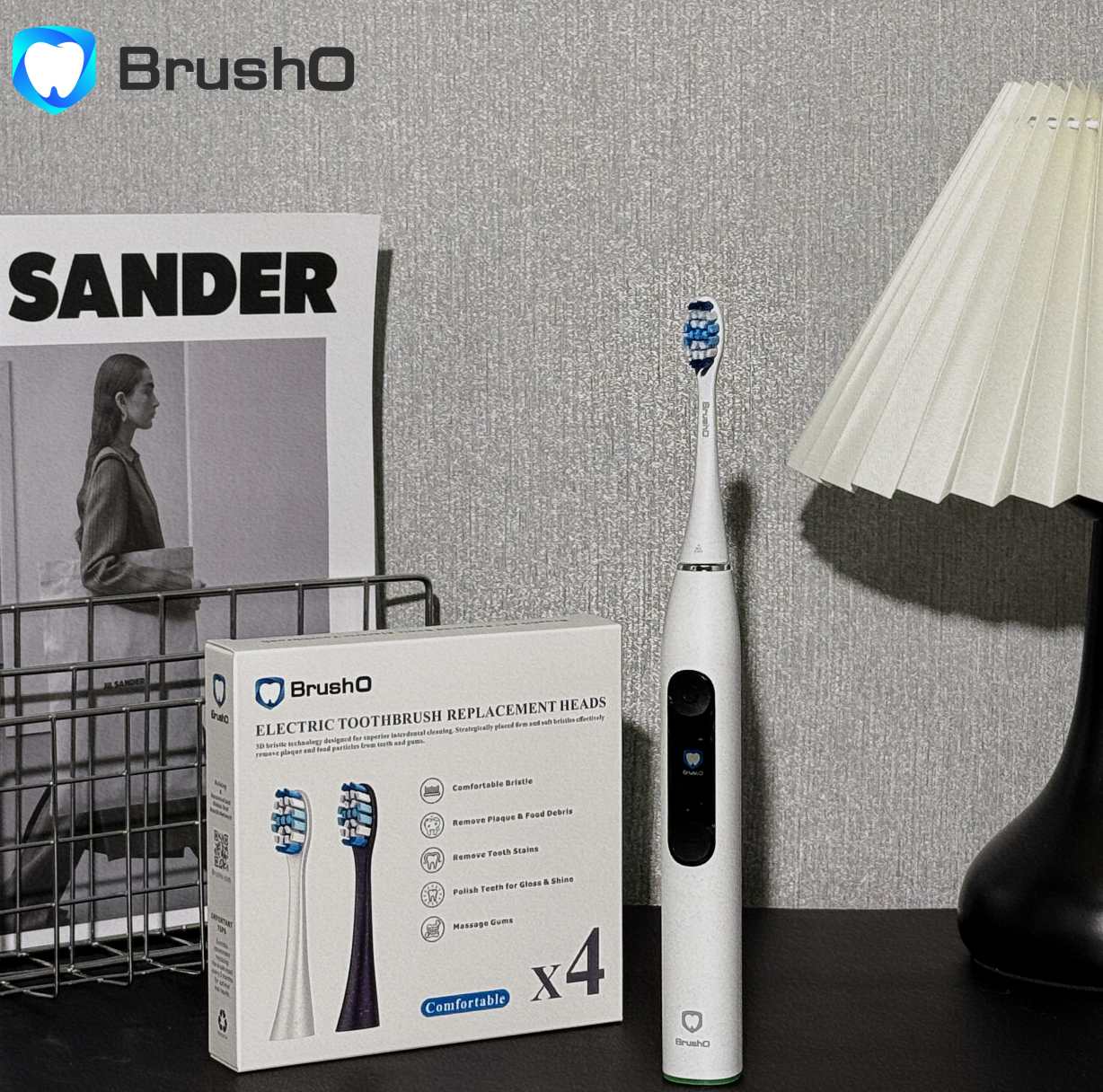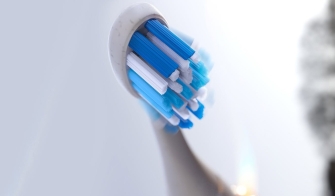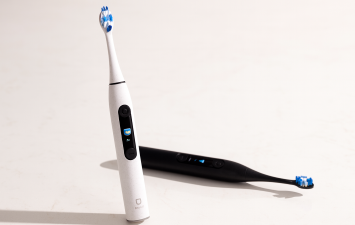Back
Why Does My Toothbrush Splash Everywhere?Sep 10
Sep 10
Many users ask: “Why does my toothbrush splash everywhere?” It’s one of the most common frustrations with electric toothbrushes. Water and toothpaste spray across mirrors and shirts, turning a simple habit into a messy chore. But it doesn’t have to be this way. In this article, we’ll explore why toothbrush splashing happens, the mistakes to avoid, and how BrushO’s FSB300 smart toothbrush—with its 64,000 RPM Maglev motor and auto-sensing anti-splash design—solves the problem.

Why Electric Toothbrushes Splash in the First Place 💦
-
Turning it on too early: Switching on before the brush is in your mouth sprays foam everywhere.
-
Too much toothpaste: Excess foam escapes easily.
-
Open-mouth brushing: Foam flies out instead of staying contained.
-
Uncontrolled vibrations: Standard motors at 30K–40K RPM often produce uneven splatter.
👉 Splashes are not just about speed; it’s also about design and technique.
The Common Mistakes You Should Avoid 🚫
-
Powering On Before Brushing
Always place the brush in your mouth before pressing the start button.
-
Using Too Much Toothpaste
A pea-sized amount is enough. More = more foam = more splashes.
-
Brushing with Mouth Wide Open
Keep lips lightly closed to reduce spray.
-
Wrong Angle of Brushing
Pointing the brush outward instead of toward the gum line spreads the water.
Why BrushO Is Different: Anti-Splash by Design 🤖
Unlike many toothbrushes, BrushO’s FSB300 Smart Toothbrush is engineered to prevent splashes, even at ultra-high speeds.
-
64,000 RPM Maglev Motor ⚡
Despite one of the industry’s highest frequencies, BrushO uses linear magnetic suspension for smooth, controlled vibrations that don’t fling foam around.
-
Auto-Sensing Technology 🧠
The FSB300 detects pressure and brushing position, adapting vibration amplitude to minimize spray.
-
Optimized Brush Head Design 🪥
The brush head channels toothpaste and water directly onto teeth, not out of your mouth.
-
Smart Mode Selection 🔄
With sensitive and gum-care modes, users can choose gentler speeds that reduce mess without sacrificing cleaning.
Real Benefits for Everyday Users 🌟
-
Cleaner Bathroom: No more scrubbing toothpaste off mirrors.
-
Better Morning Routine: Quick brush before work without worrying about your shirt.
-
Kid-Friendly: Children can brush without making a mess.
-
Professional-Level Cleaning: High-frequency cleaning without the usual downsides.
FAQ: Toothbrush Splashing
Q1: Why does my toothbrush splash everywhere?
Because of excess foam, open-mouth brushing, or uncontrolled vibrations.
Q2: Can I stop splashing with a better technique?
Yes, use less toothpaste, close your lips, and power on after placing it in your mouth.
Q3: How does BrushO prevent splashing?
With a 64K RPM Maglev motor, auto-sensing technology, and optimized brush head design, it keeps brushing powerfully but clean.
Most electric toothbrushes splash because of poor design and user mistakes. But BrushO proves that powerful doesn’t have to mean messy. With its 64,000 RPM Maglev motor and auto-sensing anti-splash technology, BrushO FSB300 delivers a clean, efficient, and splash-free brushing experience every time.
Recent Posts

How to Disinfect Your Toothbrush
Keep your mouth clean by making sure your toothbrush is, too.

Why BrushO Offers Free Brush Heads
BrushO doesn’t just promise free brush heads for life — it rewards you for doing what’s best for your health: brushing daily.

How to Reduce Dental Anxiety and Make Brushing Easier
Dental anxiety isn’t just about visiting the dentist—it can affect your daily oral hygiene, especially brushing. If brushing your teeth feels stressful, overwhelming, or even scary (especially for kids or those with sensory sensitivity), you’re not alone.

How to Master Smart Brushing with AI‑Powered Toothbrushes
Smart toothbrushes are transforming the way we care for our teeth.

How to Maximize Your Toothbrush Battery Life
Wondering why your electric toothbrush battery drains so quickly? Or how to make sure your AI-powered brush like BrushO performs at its best for years?

Are You Overpaying for a Toothbrush?
If your toothbrush costs a small fortune but doesn’t make your teeth feel cleaner, you might be paying more than you should. Here’s how to tell if you’re getting true value — and how to choose smarter.

How to Switch from Manual to Electric Brush
Thinking of switching from a manual to an electric toothbrush?
Does Brushing Longer Mean Cleaner Teeth?
Many people believe that brushing longer automatically means a cleaner mouth—but is that true?
How to Brush Smarter, Not Harder
Brushing your teeth harder doesn’t mean brushing them better. In fact, it might be harming your gums and enamel.

How to Make Your Diet Protect Your Teeth
Maintaining a bright, healthy smile isn’t just about brushing and flossing — your diet plays a huge role in oral health. The foods and drinks you consume every day can either help protect your teeth or contribute to decay and gum disease.
